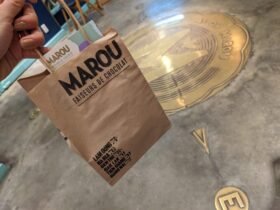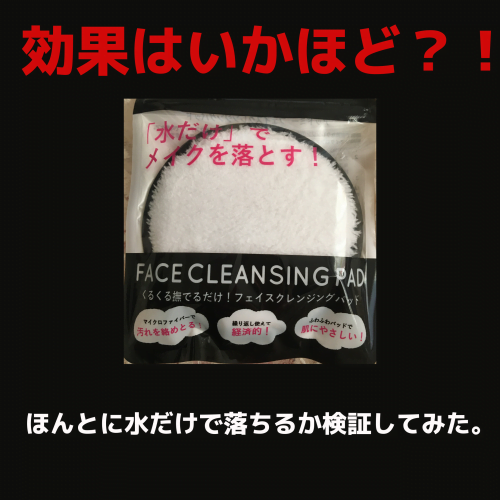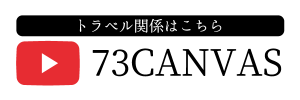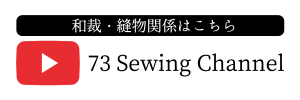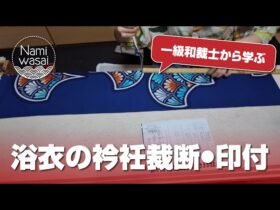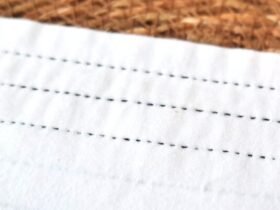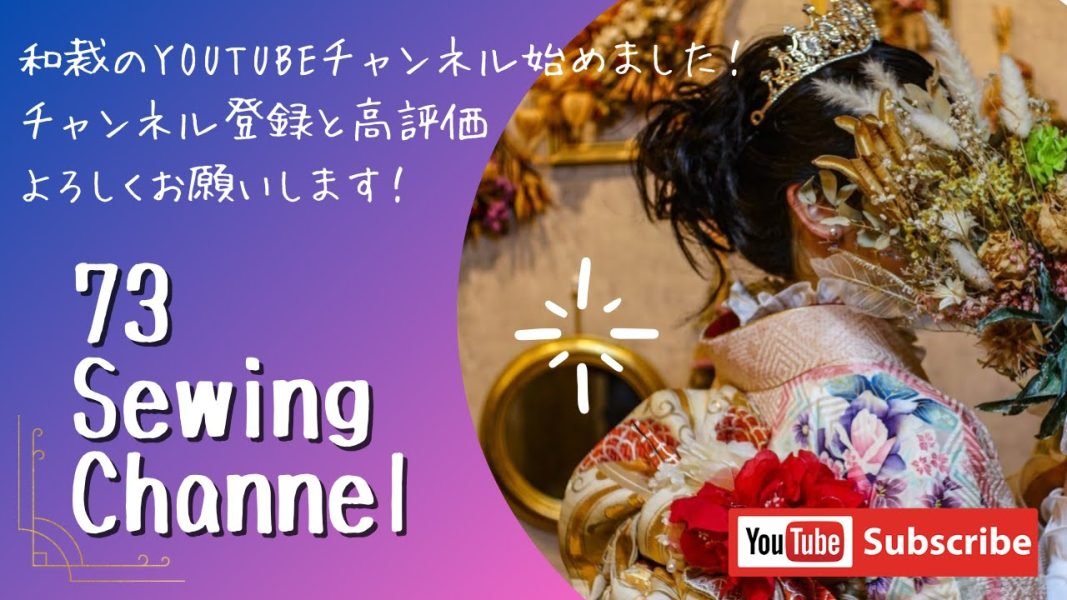What is 和裁-Wasai?
和裁-WASAI is the process of making a kimono with own hands and various techniques are used to make a kimono.The technicians are called “Wasaishi”.
Basicary, we don’t use the machine for making kimonos. We make a kimono only by hand sewing.
There is a completely different discovery from T-shirts, jean pants, and summer dresses.
In this article, we will learn more about Japanese hand sewing skills of Wasai.
Profile
Manami Kato. 1st-class certified kimono tailor
Professional kimono, 1st class certified kimono tailor. Tailor with six years of experience in the industry.
Those who have obtained Level 1 of this qualification have earned a high reputation in the industry and are nationally recognized qualified persons who have passed an examination that certifies a higher level of knowledge and skills for tailoring Japanese clothes.
According to the Vocational Ability Development Promotion Law, those who do not have the qualifications of a kimono dressmaking technician are prohibited from claiming themselves as a kimono tailor.
Kimono tailor with national recognized qualification will teach you about wasai used to make kimonos.

We don’t use pattern paper for making kimonos.

The major difference is that a paper pattern is not necessary.
In wasai, the fabric is placed on a flat surface, such as a board, and cut, but unlike dresses and shirts, paper patterns are not used.
The sizes of what I want to make are measured with a ruler and marked directly on the fabric.
Cut the fabric straight
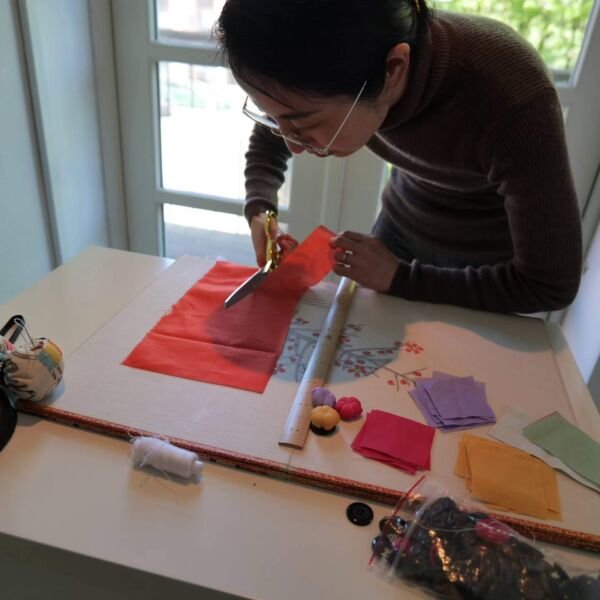
A-line skirts, for example, are sometimes cut at an angle to the fabric.
In Wasai, the fabric is cut straight, either vertically or horizontally.
Since everything is cut in straight lines, all parts are rectangular.
Think of a kimono or yukata.
You can see that they are tailored by combining a number of rectangles.
For skirts, it is difficult to unravel the threads and reuse them because the parts are made specifically for that particular garment.
However, kimonos made by the straight-cutting method of wasai have the characteristic of returning to the fabric after being tailored by untying the threads and can be remade as a piece of cloth for another use or as a new kimono.
Sew on the assumption that it will be untie
In most cases, shirts and skirts are sewn with a seam allowance and the excess fabric is cut off.
In Japanese sewing, the fabric is sewn as marked according to the size, but the excess is never cut off.
The fabric is sewn in neatly to avoid stiffness, so that once the kimono is all untied after tailoring.
It can be put back together into its original rectangular parts.
It can be re-tailored to be larger or smaller than the original size, although there are some limitations.
Invisible seams
Fold one side of the fabric over the seam with a width of 1 mm or less so that the seam is not visible. This technique is called “Kise”.
What do I need for making kimono?
I use these tools to make kimonos ↓
- Kote(Trowel)
- Needle
- Thimble
- Thread
- Kakehari & Kencho-ki
- Ruler
- scissors
- Sode shape pattern
- fabricweight
- The boad for sewing
These are tools What I’m using for making kimonos.
Every tools quit unique in wasai.
Kote(Trowel)
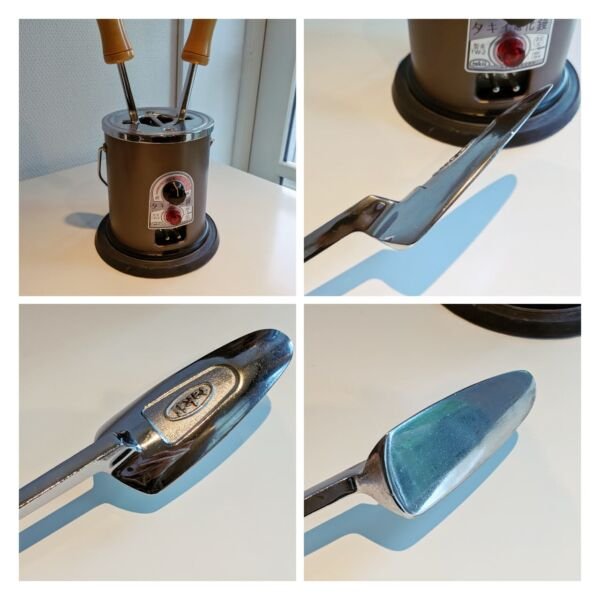
A wasai trowel is a tool that uses heat and pressure to make marks. The tip of the trowel is sharp and flat, so you can iron even the smallest details.
The temperature can be adjusted from 120 degrees to 240 degrees.
Shape of the tip: Especially important, the tip of the iron is hand-crafted into an ideal shape one by one by skilled craftsmen who have been polishing and plating it for many years.
Unfortunately, the company that makes the soldering iron has now discontinued production and it is difficult to obtain one in Japan.
Sashi(Ruler)
A ruler used in kimonos’ making.
It uses a unit called the Kuzira shaku.
Kuzira means whale. A long time ago, it was said to have originated from whale whiskers, but this is not certain.
Needle

This needle that is usual to make kimono. We call it “Shinoni”. These are the numbers. Each number has a meaning in terms of thickness and length. The above one is 4, which is the number of thicknesses.
There are fine vertical lines on the surface of the polished needle. Finely polished vertically down to the tip of the needle, so it passes through the cloth well and does not make you feel tired.
Suitable for basic, thin fabrics.
Bacic sewing skills of wasai
Kimonos are tailored using a lot of techniques, and I’ll show you the hand-sewing technique, which is an essential part of kimono making.
Unshin
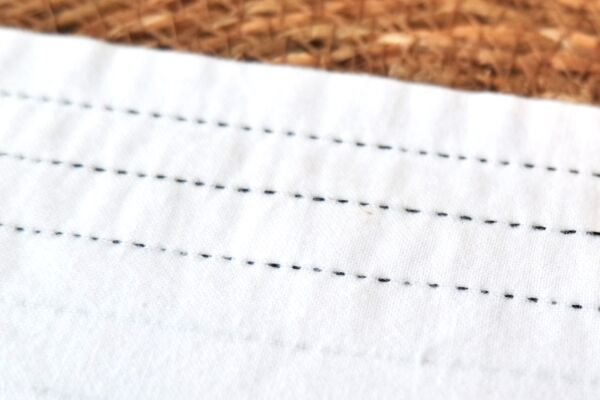
The unshin is the basic sewing method of Wasai, and it’s used in more than 80% of my kimonos.
It looks the same as normal stitching, but if you master it, you can sew long distances very quickly.
It is useful not only for sewing kimonos but also for everyday sewing.
I’ve made a video of Unshin. Let’s try!


